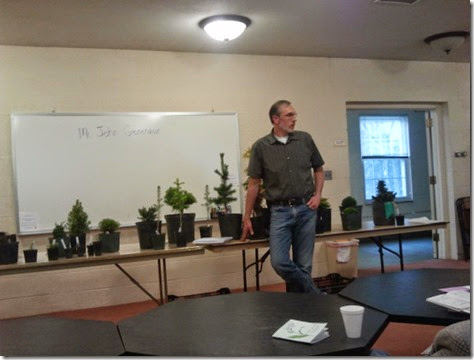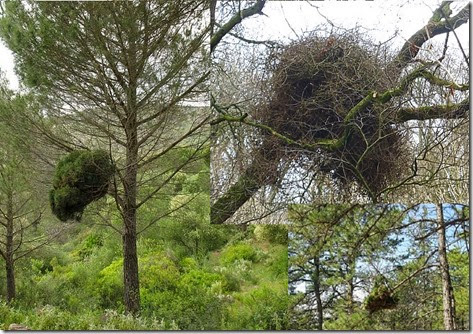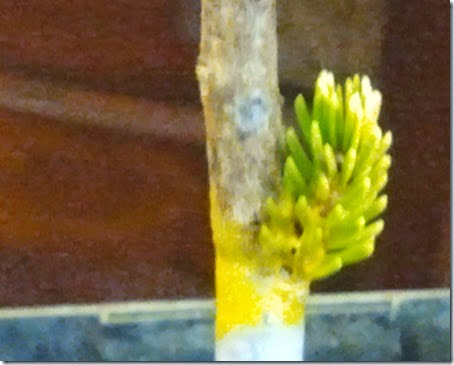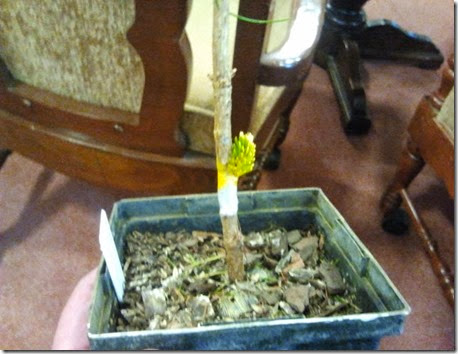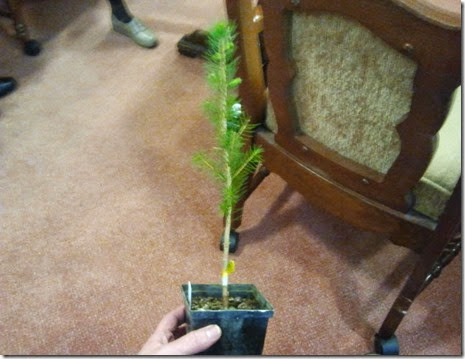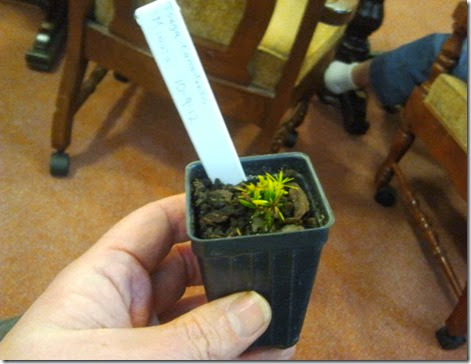I recently attended a meeting of the Wyandotte Garden Club, where our guest speaker, John Generaux, from Hidden Lake Gardens, in Tipton Michigan, spoke to us about Miniature Conifers.
Hidden Lake Gardens a 755 acre a botanical Garden and arboretum operated by Michigan State University, hosts, among it’s many gardens, The Harper Collection, a collection of some 600 specimens of rare and dwarf conifers. Of course, conifers are trees that bear cones, what we commonly refer to as pine cones, although pines are just one of the many types of conifers.
In a fascinating, and all too brief presentation, John explained to us about “Witches Brooms,” which are dense clusters of twigs or thickened stems that develop on the branches of woody trees.
These clusters of stems, contain genetically mutated branches, which, when propagated are a new plant, with DNA different from the tree where they were originally growing.
John dedicates his weekends at Hidden Lake Gardens, to locating, studying, developing, propagating and preserving these newly discovered and rare varieties of trees.
As he explained to us, in order to preserve these new species, a slip of the “broom” is taken and grafted on to a seedling of a tree of the same genus (so a spruce to a spruce, a fir to a fir, a pine to a pine, etc.)
This slip was taken from a “Broom” growing on a spruce tree, so it has been grafted onto a young Norway Spruce seedling. John indicated that Norway Spruce is used because they are readily available and relatively inexpensive.
When the graft starts to show new growth, he knows it has successfully joined with the root stock or scion. Then, when the graft become strong and healthy enough, the top of the Norway Spruce will be cut away, leaving him with a chimera, an organism with more than one individual sets of DNA. As the tree mature, and gets strong enough, cuttings can be taken from the new growth and rooted, creating a tree that is genetically independent of both the original host and the interim scion.
Although this process can be described in just a few sentences, in fact it can take many years.
These are generally slow growing trees, . Many of the varieties of rare trees in the collection grow from 1/2” to 3” per year, so it could take up to 24 years to grow a tree a foot tall. In fact this miniature hemlock tree is over two years old and slightly over 1” tall.
John speculates that some of his trees that he is just starting now will barely be big enough to be transplanted years from now when he retires. It is clearly a work of passion and dedication, and not one motivated or driven by profit.
This wonderful presentation ended with an invitation to visit Hidden Gardens and tour the many different collections housed there.

